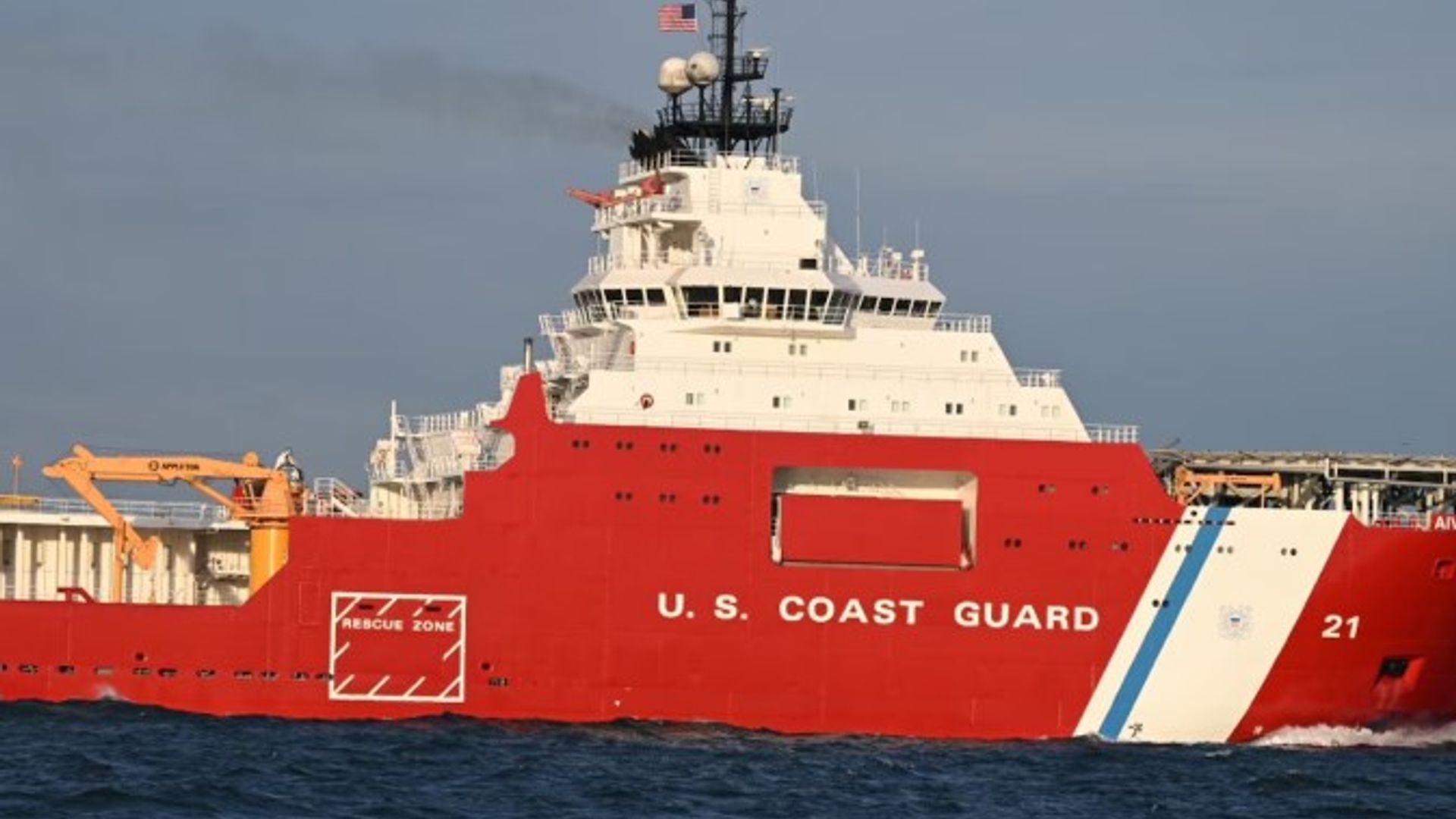
FOR THE FIRST TIME IN 25 YEARS, THE UNITED STATES COAST GUARD IS WELCOMING A NEW POLAR ICEBREAKER TO ITS FLEET. IT WILL BE STATIONED IN JUNEAU, ALASKA, AND IT’S SCHEDULED TO START BUSTING ICE FOR THE SERVICE IN 2026.
THE SHIP ISN’T NEW. LAST YEAR, THE COAST GUARD BOUGHT THE M/V AIVIQ FROM OFFSHORE SURFACE VESSELS LLC. AFTER GETTING SOME FRESH PAINT, THE AIVIQ WAS ALSO RENAMED. IT’S NOW CALLED COAST GUARD CUTTER (CGC) STORIS, WHICH MEANS ‘GREAT ICE’ IN SCANDINAVIAN, AND IS AN HOMAGE TO THE FIRST CGC STORIS
Sal Mercoglieano: It was actually designed to operate up in and around Alaska. It was actually what’s called an anchor handling vessel. It was used to help more large offshore production platforms.
SAL MERCOGLIANO IS A COLLEGE PROFESSOR, SHIPPING EXPERT AND HOST OF THE WIDELY POPULAR YOUTUBE CHANNEL WHAT’S GOING ON WITH SHIPPING.
HE SAYS AS A LIGHT-TO-MEDIUM ICEBREAKER, THE NEW CGC STORIS WON’T BE USED TO BREAK LARGE SHEETS OF PACK ICE.
Megcogliano: Light icebreakers are really designed to move around kind of what we would call flow ice. That’s the ice that’s kind of just moving around very lightly. Not a lot of smashing and hammering in. Medium icebreakers are designed when ports and facilities ice over. So that you can break through the ice before it’s really hardened.
U.S. COAST GUARD ADMIRAL LINDA FAGAN SAYS THE SERVICE IS THRILLED TO ACQUIRE THE STORIS, AND SAYS IT DEMONSTRATES THE COMMITMENT TO ASSERT AND PROTECT U.S. SOVEREIGNTY IN THE ARCTIC.
CLIMATE CHANGE IS OPENING UP MORE OPPORTUNITIES FOR NATIONS TO TRANSIT AND EXPLORE THE ARCTIC OCEAN FOR THINGS LIKE OIL, RARE METALS AND MINERALS, OR JUST ALTERNATIVE ROUTES TO DELIVER GOODS.
UP UNTIL NOW, THAT WASN’T A PROSPECT SEEN AS ALL THAT FINANCIALLY VIABLE FOR THE UNITED STATES. WHICH IS WHY MERCOGLIANO SAYS THE NATION LARGLELY ABANDONED ITS PLANS TO BUILD A MASSIVE ACTIC FLEET IN THE 1970S. THAT AND THE CONSTRUCTION OF PIPELINES ACROSS ALASKA DEEMED THE VENTURE UNNECESSARY AT THE TIME.
50 YEARS LATER, AND THE U.S. IS NOW TRYING TO PLAY CATCH UP TO RUSSIA AND, TO A LESSER DEGREE, CHINA WHEN IT COMES TO MAINTAINING AN ARCTIC PRESENCE.
THE COAST GUARD SAYS IT NEEDS A MIX OF EIGHT OR NINE ICEBREAKERS TO MEET ITS OPERATIONAL REQUIREMENTS, BUT IT CURRENTLY ONLY HAS TWO;, THE CGC HEALY AND CGC POLAR STAR.
THE HEALY HAD TO BE SIDELINED FOR A BIT IN 2024 BECAUSE OF AN ELECTRICAL FIRE, AND THE 50- YEAR-OLD POLAR STAR IS ASSIGNED TO MAKING RUNS TO THE ANTARCTIC.
THERE ARE PLANS TO BUILD SOME NEW ICEBREAKING VESSELS CALLED POLAR SECURITY CUTTERS, BUT THE FIRST OF THOSE ISN’T SCHEDULED FOR DELIVERY UNTIL 2030.
IT’S AN ADMITTEDLY ‘NOT GREAT’ SPOT TO BE IN FOR THE UNITED STATES.
Mercogliano: this year we saw the most tonnage ever move through that northern Arctic area, about 34 million tons move through, with the Russians having a plan by the mid-2030s to increase that tenfold. up to about 350 million tons. And so that will become a major lane of traffic. And it’s one of the reasons why, because that passes Alaska, through the Bering Strait and the Bering Sea, the U.S. wants to have a kind of presence in that area. To ensure that vessels that are sailing through it are safe, meeting the provisions. We’ve seen a lot of Russian ships creating problems in the Baltic, for example. So, I mean, you really want a presence up there and that requires an icebreaker.
AGAIN, CHINA IS ALSO MAKING PLANS FOR MORE ARCTIC ACTIVITY. CHINA HAS NO ARCTIC COASTLINE. IT’S CLOSEST PORT TO ARTIC WATERS IS MORE THAN 700 MILES AWAY, BUT CHINA CALLS ITSELF A NEAR-ARCTIC NATION ANYWAY.
AND THE PEOPLE’S LIBERATION ARMY WANTS TO CHALLENGE THE U.S. WHEREVER IT CAN, WHICH INCLUDES THE ARCTIC.
HOWEVER, NOT EVERYTHING CHINA DOES IS SOLELY BASED ON MILITARY RATIONALE. MERCOGLIANO SAYS THE CHINESE ALSO SEE THE ARTIC AS AN ALTERNATIVE TO TRANSPORT GOODS SHOULD EXISTING TRADE ROUTES, LIKE THE STRAIT OF MALACCA, BE SHUTDOWN.
FOR MORE OF OUR UNBIASED, STRAIGHT FACT REPORTING ABOUT THE ARCTIC AND MILITARY ACTIVITY BE SURE TO DOWNLOAD THE STRAIGHT ARROW NEWS APP TODAY.











